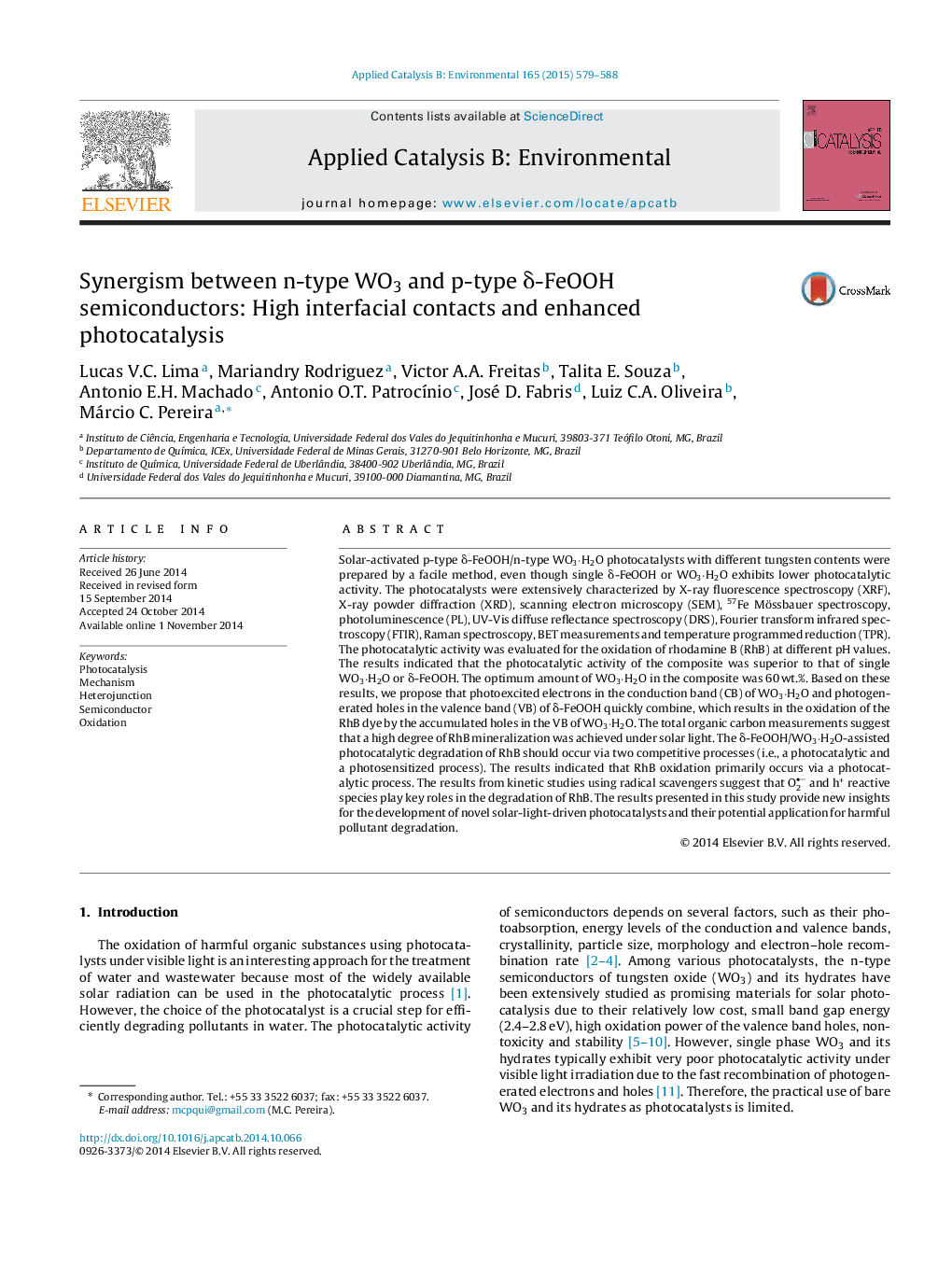| کد مقاله | کد نشریه | سال انتشار | مقاله انگلیسی | نسخه تمام متن |
|---|---|---|---|---|
| 45590 | 46416 | 2015 | 10 صفحه PDF | دانلود رایگان |

• A novel WO3·H2O/δ-FeOOH composite photocatalyst was prepared.
• WO3·H2O and δ-FeOOH particles have expressive contact.
• WO3·H2O/δ-FeOOH composite exhibits good separation of electrons and holes.
• The composite shows higher photoactivity than their single components.
• The composite can be activated by sunlight.
Solar-activated p-type δ-FeOOH/n-type WO3·H2O photocatalysts with different tungsten contents were prepared by a facile method, even though single δ-FeOOH or WO3·H2O exhibits lower photocatalytic activity. The photocatalysts were extensively characterized by X-ray fluorescence spectroscopy (XRF), X-ray powder diffraction (XRD), scanning electron microscopy (SEM), 57Fe Mössbauer spectroscopy, photoluminescence (PL), UV-Vis diffuse reflectance spectroscopy (DRS), Fourier transform infrared spectroscopy (FTIR), Raman spectroscopy, BET measurements and temperature programmed reduction (TPR). The photocatalytic activity was evaluated for the oxidation of rhodamine B (RhB) at different pH values. The results indicated that the photocatalytic activity of the composite was superior to that of single WO3·H2O or δ-FeOOH. The optimum amount of WO3·H2O in the composite was 60 wt.%. Based on these results, we propose that photoexcited electrons in the conduction band (CB) of WO3·H2O and photogenerated holes in the valence band (VB) of δ-FeOOH quickly combine, which results in the oxidation of the RhB dye by the accumulated holes in the VB of WO3·H2O. The total organic carbon measurements suggest that a high degree of RhB mineralization was achieved under solar light. The δ-FeOOH/WO3·H2O-assisted photocatalytic degradation of RhB should occur via two competitive processes (i.e., a photocatalytic and a photosensitized process). The results indicated that RhB oxidation primarily occurs via a photocatalytic process. The results from kinetic studies using radical scavengers suggest that O2
• − and h+ reactive species play key roles in the degradation of RhB. The results presented in this study provide new insights for the development of novel solar-light-driven photocatalysts and their potential application for harmful pollutant degradation.
Figure optionsDownload as PowerPoint slide
Journal: Applied Catalysis B: Environmental - Volume 165, April 2015, Pages 579–588